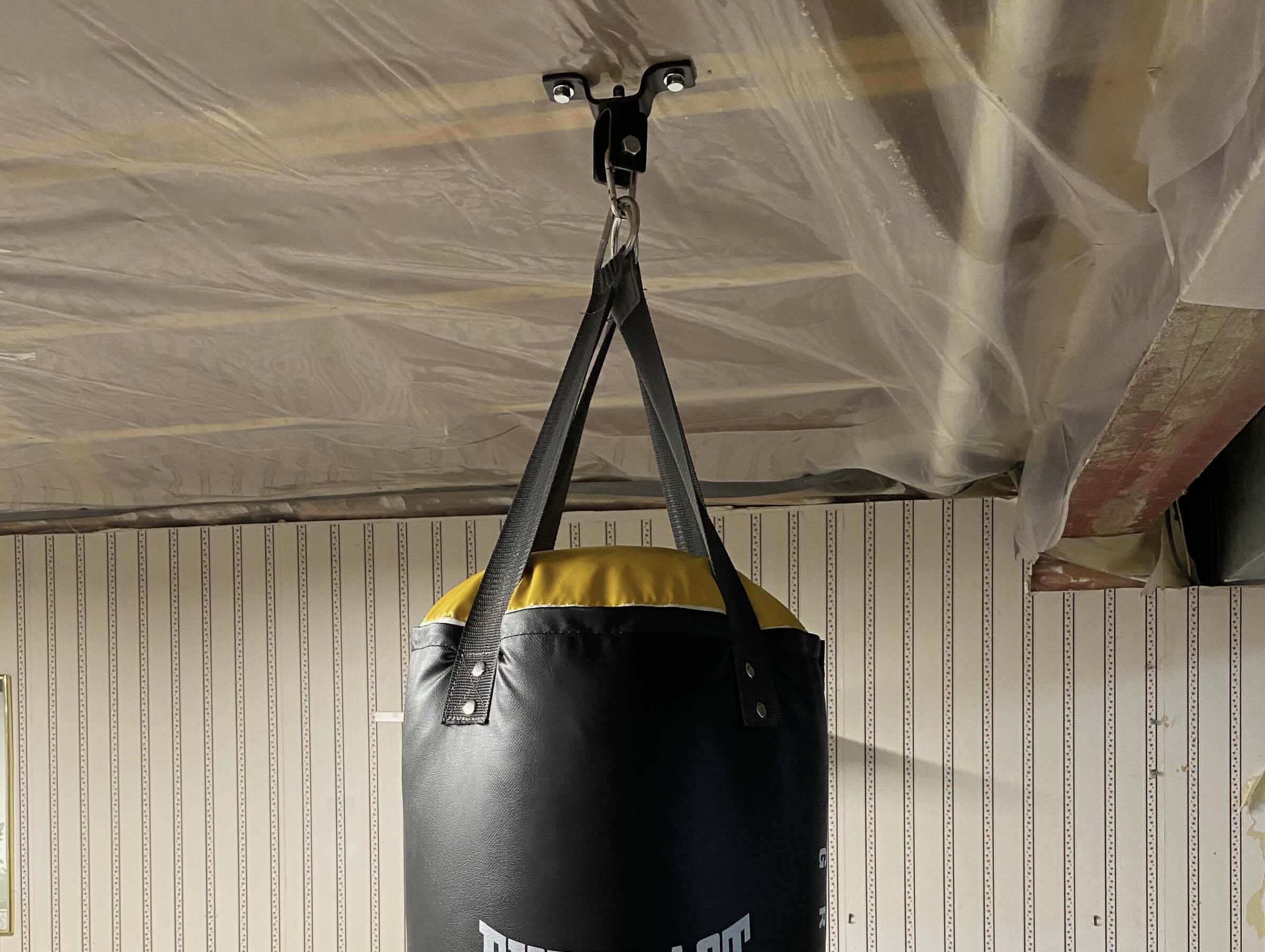

Articles
How To Hang Something Heavy From The Ceiling
Modified: February 24, 2024
Discover the best articles on how to hang something heavy from the ceiling. Learn expert tips and techniques for a secure and sturdy installation.
(Many of the links in this article redirect to a specific reviewed product. Your purchase of these products through affiliate links helps to generate commission for Storables.com, at no extra cost. Learn more)
Introduction
When it comes to hanging something heavy from the ceiling, it’s essential to ensure that it is securely and safely mounted. Whether you’re looking to hang a heavy light fixture, a plant, or a decorative object, following the correct procedures and using the right hardware is key to prevent accidents and damage to your ceiling.
In this article, we will guide you through the process of hanging something heavy from the ceiling. We’ll cover everything from assessing the ceiling to choosing the right hardware and properly installing it. By the end, you’ll feel confident in your ability to hang heavy objects safely and securely.
Before you begin, it’s important to assess the strength and suitability of your ceiling. Different types of ceilings can support different weights, so it’s crucial to understand the limitations and requirements of your specific ceiling type. Additionally, you’ll need to gather the necessary tools and equipment for the job, including a stud finder, a drill, screws, and any specialized hardware you may need.
Proceed with caution and always prioritize safety when working with heavy objects. If you’re unsure about any step of the process, it’s recommended to consult a professional for assistance.
Now, let’s dive into the detailed steps to hang something heavy from the ceiling.
Assessing the Ceiling
Before you start hanging anything heavy from your ceiling, it’s essential to assess its structural integrity. A ceiling that is not designed to support heavy objects could potentially collapse or cause damage. Take the time to determine the material your ceiling is made of and its maximum weight-bearing capacity.
If you have a suspended or drop ceiling, you may need to consult an engineer or a contractor to determine if it can safely support the weight of the item you wish to hang.
For solid ceilings, such as those made of concrete or plaster, you may need to identify load-bearing beams or joists that can support the weight of the object. It’s important to find a secure anchor point to avoid damaging the ceiling or risking a collapse.
Choosing the Right Hardware
Once you’ve assessed the capacity of your ceiling, it’s time to choose the appropriate hardware for hanging your heavy object. The type of hardware you will need depends on the weight of the item and the material of the ceiling.
For lighter items that weigh up to 10 pounds, you can usually use simple hooks or drywall anchors. However, for heavier objects, it’s advisable to use more robust supports like ceiling anchors or toggle bolts that can distribute the weight evenly across the ceiling structure.
When selecting the hardware, make sure to check the weight limits specified by the manufacturer and choose one that can safely handle the load.
Key Takeaways:
- Ensure safety and stability by assessing your ceiling’s weight-bearing capacity and choosing the right hardware for hanging heavy objects. Proper installation and regular stability testing are crucial for long-term durability.
- Prepare the area, find a secure anchor point, and follow proper installation steps to hang heavy objects safely from your ceiling. Regular stability testing and maintenance ensure a secure and visually appealing space.
Read more: How To Hang Something On Stucco
Assessing the Ceiling
Before you begin the process of hanging something heavy from your ceiling, it’s important to assess the structural integrity of the ceiling itself. This step is crucial to ensure the safety of both the object you are hanging and the ceiling itself.
The first thing you need to determine is the type of ceiling you have. There are several types of ceilings, including plaster, drywall, suspended, and drop ceilings. Knowing the type of ceiling will help you understand its weight-bearing capacity and the specific considerations you need to take into account.
If you have a suspended or drop ceiling, it is important to consult an engineer or a contractor to determine if it can safely support the weight of the item you wish to hang. These types of ceilings are often not designed to support heavy loads, so professional advice is crucial to prevent accidents or damage.
For solid ceilings, such as those made of concrete or plaster, you’ll need to identify load-bearing beams or joists that can support the weight of the object. This step requires a stud finder, which is a handheld tool that detects the location of wooden studs or joists behind the ceiling surface.
Using a stud finder, carefully scan the ceiling surface to locate the positions of the studs or joists. These support structures provide the necessary stability and strength to bear the weight of heavy objects. Once you’ve identified the location of the studs or joists, you can mark them with a pencil or painter’s tape for reference.
In addition to finding the studs or joists, it’s essential to understand the weight-bearing capacity of your ceiling. Different materials and construction methods have varying weight limits. Check the manufacturer’s specifications or consult a professional if you are unsure about the maximum load your specific ceiling can withstand.
If you’re working with a drywall ceiling, it’s important to note that the ceiling’s weight-bearing capacity may be limited. Drywall ceilings are typically secured to studs or joists with screws or nails, and excess weight can cause the fasteners to loosen or the drywall to crack and collapse.
Take into consideration any additional factors that may affect the ceiling’s strength, such as water damage, sagging, or structural issues. If you notice any signs of damage or instability, it’s best to address those problems before attempting to hang something heavy.
Remember, safety should always be your top priority when assessing the ceiling. If you are uncertain about the ceiling’s stability or how to identify load-bearing structures, consult a professional contractor or engineer who specializes in construction and structural engineering.
By carefully assessing the ceiling and understanding its weight-bearing capacity, you’ll be better equipped to choose the appropriate hardware and safely hang something heavy from your ceiling.
Choosing the Right Hardware
Choosing the appropriate hardware is crucial when it comes to hanging something heavy from your ceiling. The right hardware not only ensures the safety and stability of the object but also prevents damage to the ceiling itself.
When selecting hardware, there are a few factors to consider:
- Weight Capacity: Determine the weight of the object you plan to hang and ensure that the hardware you choose can support that weight. It’s important to refer to the weight limits specified by the manufacturer for each type of hardware.
- Ceiling Material: Consider the material of your ceiling when selecting hardware. Different materials, such as drywall, plaster, or concrete, require different types of anchors and fasteners for secure installation.
- Anchor Types: There are various types of anchors available, including toggle bolts, ceiling anchors, molly bolts, and expansion anchors. Each anchor type has its own advantages and limitations, so choose the one that best suits your specific needs and ceiling type.
- Installation Method: Consider how the hardware will be installed. Some anchors require drilling pilot holes, while others may be self-drilling. Ensure that you have the necessary tools and equipment to install the chosen hardware properly.
For lighter items weighing up to 10 pounds, simple hooks or drywall anchors may suffice. These anchors are designed specifically for use with drywall ceilings and can provide a secure hold when installed correctly.
For heavier objects, such as chandeliers or large mirrors, it is recommended to use more robust hardware like ceiling anchors or toggle bolts. These types of anchors distribute the weight evenly across a larger area, providing greater stability and reducing the risk of damage to the ceiling.
Ceiling anchors are an excellent choice for attaching heavy objects to a solid ceiling structure, such as concrete or plaster. These anchors typically consist of a screw, an anchor body, and a collar. To install a ceiling anchor, you’ll need to drill a hole in the ceiling, insert the anchor, and tighten the screw to expand the anchor and secure it in place.
Toggle bolts, on the other hand, are suitable for both solid and hollow ceilings. These anchors have metal wings that fold up for insertion through a pre-drilled hole and then expand behind the ceiling to create a secure connection. Toggle bolts provide strong support and can be easily removed if necessary.
Remember to read and follow the manufacturer’s instructions when installing any type of hardware. Improper installation can compromise the strength and stability of the anchor, leading to potential accidents or damage.
Furthermore, for particularly heavy objects or specialized installations, it’s advisable to consult with a professional contractor or engineer who can assess the specific requirements and provide expert guidance on selecting the right hardware.
By choosing the appropriate hardware, you can ensure the safe and secure hanging of heavy objects from your ceiling, providing peace of mind and maintaining the integrity of your space.
Preparing the Area
Before you begin the installation process, it’s important to properly prepare the area where you will be hanging something heavy from the ceiling. Taking the time to prepare the area ensures a smooth installation process and helps to minimize any potential risks or damage to the surrounding space.
Here are some important steps to follow when preparing the area:
- Clean the area: Start by clearing the space around the area where the heavy object will be hung. Remove any furniture, decorations, or other items that may obstruct your work or potentially be damaged during installation.
- Protect the floor: Place a drop cloth or protective covering on the floor beneath the installation area. This will help to catch any debris that may fall during the installation process and protect the floor from scratches or damage.
- Gather the necessary tools: Ensure that you have all the tools and equipment you’ll need for the installation. This may include a stud finder, drill, screws, anchors, and any specialized hardware required for the specific installation.
- Review the instructions: Carefully read and understand the manufacturer’s instructions for both the heavy object you’ll be hanging and the chosen hardware. Familiarizing yourself with the instructions beforehand will help prevent mistakes and ensure a proper installation.
- Measure and mark the installation spots: Use a measuring tape to determine the exact location where the heavy object will be hung. Mark these spots on the ceiling using a pencil or painter’s tape. Double-check the measurements to ensure accuracy.
- Plan for wiring or cables: If you’re hanging a heavy object that requires electrical wiring or cables for power or support, carefully plan the route for these wires. Make sure there is enough space to safely run the wires and that any connections are done according to electrical safety guidelines.
By properly preparing the area, you’ll create a safe and organized workspace for the installation process. This will help to minimize any potential damage to the surrounding area and ensure a smooth and successful installation of your heavy object.
Remember, if you’re unsure about any step of the preparation process or the installation itself, it’s always best to seek guidance from a professional contractor or electrician. They can provide expert advice and ensure that the installation is done safely and securely.
Now that you’ve prepared the area, it’s time to move on to the next step: finding a stud or ceiling joist to provide a secure anchor point for hanging your heavy object.
Finding a Stud or Ceiling Joist
When hanging something heavy from the ceiling, it’s crucial to find a stud or ceiling joist as a secure anchor point. The stud or joist provides the necessary strength and stability to support the weight of the object. By locating these structural elements, you can ensure a safe and secure installation.
Follow these steps to find a stud or ceiling joist:
- Use a stud finder: A stud finder is a handheld tool that can detect the position of wooden studs or joists behind the surface of the ceiling. Start by selecting a high-quality stud finder and familiarize yourself with its instructions to ensure accurate readings.
- Turn on the stud finder: Most stud finders have a power button or switch that needs to be turned on before use. Make sure the stud finder is properly powered and ready for operation.
- Calibrate the stud finder: Some stud finders require calibration before use. This calibration process involves placing the stud finder on a known surface without studs or joists and pressing a calibration button. Follow the specific instructions of your stud finder to calibrate it properly.
- Hold the stud finder against the ceiling: Position the stud finder against the ceiling at a central location near where you want to hang the heavy object. Slowly move the stud finder across the ceiling, allowing it to scan for studs or ceiling joists.
- Interpret the stud finder signals: As you move the stud finder, it may emit different signals or display indicators when it detects a stud or ceiling joist. These indicators can vary depending on the type of stud finder you’re using, so consult the instructions or user manual to understand the specific signals.
- Mark the location: When the stud finder indicates the presence of a stud or ceiling joist, mark the location using a pencil or painter’s tape. Repeat this process along the ceiling to locate multiple studs or joists if necessary. Ensure your marks are visible and easy to reference during the installation process.
If the stud finder is unable to detect studs or joists, it’s possible that you have a different type of ceiling construction or that the joists are spaced wider apart. In such cases, you may need to utilize alternative methods, such as tapping the ceiling to listen for solid sounds or using a magnet to locate nails or screws that secure the ceiling to the studs.
It’s important to note that stud finders may not work accurately on certain ceiling materials, such as metal or plaster. In these instances, it’s advisable to consult a professional contractor or structural engineer who can provide guidance on locating the studs or joists.
By finding and marking the studs or ceiling joists, you’ll have a clear reference point for the installation. This step ensures that your heavy object is securely attached to the ceiling, minimizing the risk of accidents and damage.
Now that you’ve located the studs or joists, it’s time to proceed with the installation using the appropriate hardware, such as ceiling anchors or hooks, which we will cover in the next section.
Use a stud finder to locate a ceiling joist for maximum support when hanging something heavy. Install a heavy-duty ceiling hook or anchor directly into the joist for secure mounting.
Read more: How To Carry Something Heavy Up Stairs
Using a Ceiling Anchor
When hanging something heavy from the ceiling, using a ceiling anchor is an effective way to provide secure support and distribute the weight evenly. Ceiling anchors are specially designed hardware that provide stability and prevent damage to the ceiling.
Follow these steps to properly use a ceiling anchor:
- Choose the appropriate anchor: Select a ceiling anchor that is suitable for the weight and type of object you’re hanging. Consider factors such as the material of the ceiling, the load-bearing capacity, and the installation method required for the anchor.
- Identify the installation location: Refer to the marks you made to indicate the positions of the studs or joists. Determine where you will install the anchor, ensuring that it aligns with the center of the stud or joist for maximum strength.
- Drill a pilot hole: Use a drill and a drill bit that is slightly smaller than the anchor size to create a pilot hole in the marked installation location. The pilot hole will guide the anchor during installation and prevent the ceiling from splitting or cracking.
- Insert the anchor: Insert the anchor body into the pilot hole, ensuring it sits flush with the surface of the ceiling. Depending on the type of anchor, you may need to use a screwdriver or a hammer to tap it gently into place.
- Tighten the screw: With the anchor in position, insert the provided screw into the anchor body and carefully tighten it until it is secure. Be cautious not to overtighten, as this could strip the threads or damage the ceiling.
- Test the stability: Give the anchor a gentle tug to verify its stability. It should firmly hold in place without any noticeable movement. If you experience any loosening or instability, it may indicate an incorrect installation or the need for a stronger anchor.
- Repeat for additional anchors: If your heavy object requires multiple anchors, repeat the process for each installation location. Ensure that the distance between the anchors is appropriate to evenly distribute the weight and maintain stability.
It’s essential to carefully follow the manufacturer’s instructions for the specific ceiling anchor you’re using. Different types of ceiling anchors may have slightly different installation methods, and it’s crucial to understand the specific guidelines to ensure a secure hold.
When using ceiling anchors, it’s important to stay within their weight capacity limits. Exceeding the recommended weight limit can compromise the anchor’s effectiveness and lead to potential accidents or damage to the ceiling.
If you’re unsure about using ceiling anchors or have concerns about the weight or installation process, it’s advisable to consult a professional contractor or structural engineer. They can provide expert advice and ensure that the anchor is installed correctly to support your heavy object safely and securely.
Now that you’ve successfully installed the ceiling anchor, you’re ready to proceed with installing a ceiling hook to hang your heavy object, which we will cover in the next section.
Installing a Ceiling Hook
Installing a ceiling hook is the next step in hanging something heavy from your ceiling. A ceiling hook provides a convenient and secure attachment point for your heavy object. By following these steps, you can ensure a proper and stable installation:
- Choose the right hook: Select a ceiling hook that is appropriate for the weight and size of your heavy object. Consider the material of the hook, its weight capacity, and any additional features that may be necessary for your specific hanging needs.
- Locate the desired installation spot: Refer to the marks you made earlier to indicate the positions of the studs or joists. Identify the exact spot where you want to install the ceiling hook. It should align with the center of the stud or joist for maximum strength.
- Mark the installation spot: Use a pencil or painter’s tape to mark the precise location where the ceiling hook will be installed. Double-check the alignment to ensure accuracy.
- Pre-drill a pilot hole: Depending on the type of ceiling hook and the material of your ceiling, you may need to pre-drill a pilot hole at the marked installation spot. This step helps to guide the hook and prevents any splitting or cracking of the ceiling.
- Insert and screw in the hook: If the hook has a pre-installed screw, simply insert it into the pilot hole and screw it tightly into place. If the hook requires a separate screw, insert it through the hook and then screw it into the pilot hole until the hook is secure.
- Check for stability: Give the installed ceiling hook a gentle tug to ensure it is firmly anchored in place. Take note of any signs of movement or instability, as this may require adjusting the installation or using a stronger anchor.
- Repeat for additional hooks (if needed): If you’re hanging a larger or heavier object that requires multiple attachment points, repeat the installation process for each additional hook. Ensure that the distance between the hooks is appropriate for evenly distributing the weight.
It’s important to remember that the weight capacity of the ceiling hook should not be exceeded. If your heavy object exceeds the weight limit specified by the hook manufacturer, you may need to consider alternative installation methods or consult a professional for assistance.
By properly installing the ceiling hook, you establish a secure attachment point for your heavy object. However, always make sure to periodically inspect the hook’s stability and tighten it if necessary to maintain a safe hanging arrangement.
If you have any uncertainty or concerns about the installation process or the suitability of a ceiling hook for your specific needs, it’s recommended to seek guidance from a professional contractor or structural engineer. They can offer expert advice and ensure that your heavy object is securely and safely hung from the ceiling.
Now that you’ve successfully installed the ceiling hook, it’s time to move on to the next step: hanging your heavy object.
Hanging the Heavy Object
Now that you have prepared the area, found a stud or ceiling joist, and installed a ceiling hook, it’s time to hang the heavy object. This step requires careful attention to ensure a secure and balanced installation. Follow these steps to hang your heavy object:
- Prepare the object: Ensure that the heavy object is ready for hanging. If necessary, remove any packaging, assemble parts, or make any adjustments required before installation.
- Attach any necessary hardware: Depending on the type of object, you may need to attach additional hardware such as chains, ropes, or wires to facilitate the hanging process. Follow the manufacturer’s instructions or consult a professional for guidance on the appropriate hardware to use.
- Take safety precautions: Before lifting the heavy object, take the necessary safety precautions. Use proper lifting techniques, such as bending your knees and lifting with your legs, to avoid straining your back or causing injury.
- Position the heavy object: Carefully position the heavy object directly beneath the ceiling hook. Ensure that it is centered and balanced to maintain stability once hung.
- Securely attach the object to the hook: Lift the heavy object to the desired height and securely attach it to the ceiling hook. Follow the instructions provided by the manufacturer or utilize appropriate fasteners, such as S-hooks or carabiners, to connect the object to the hook. Ensure that the attachment is secure and supports the weight of the object.
- Double-check the stability: After hanging the heavy object, gently give it a slight shake or tug to ensure that it is stable and secure. Watch for any signs of movement or instability. If you notice any concerns, carefully reevaluate the installation or consider seeking professional assistance.
It’s crucial to follow the weight limits specified by the manufacturer for both the ceiling hook and the heavy object. Exceeding these weight limits can lead to instability, potential damage, or accidents. If the weight of the object exceeds the capacity of the ceiling hook or your installation method, it’s important to reassess and find an alternative solution.
If you’re uncertain about the installation process or have concerns about the stability of the heavy object, it’s advisable to consult a professional contractor or engineer for guidance. They can offer expert advice on the appropriate installation method or suggest alternative solutions to ensure safety and stability.
With the heavy object securely hung from the ceiling, take a step back and admire your work. Ensure that the object is level and positioned correctly. Now you can enjoy your newly hung heavy object, knowing that it has been safely and securely installed.
Next, we’ll cover the final step: testing for stability to ensure the durability of your installation.
Testing for Stability
After hanging a heavy object from the ceiling, it’s essential to test for stability to ensure the durability and safety of your installation. Testing for stability helps identify any potential issues and allows you to make adjustments as needed. Follow these steps to test the stability of your hanging heavy object:
- Step back and visually assess the installation: Take a few steps back and observe the hanging heavy object from different angles. Look for any signs of imbalance or movement. Ensure that the object is level and properly aligned.
- Gently give the object a slight shake or tug: Apply a small amount of force to the hanging heavy object by giving it a gentle shake or tug. This action is to test its stability and to ensure that it is securely attached to the ceiling hook. Observe the object for any excessive movement or signs of instability.
- Listen for any unusual sounds: While testing for stability, listen for any creaking or unusual sounds coming from the ceiling or the object itself. These sounds can indicate weak points or issues with the installation that may require further attention.
- Monitor the hanging heavy object over time: Keep an eye on the object for a period of time after installation. Check for any changes in stability or signs of wear and tear. Regularly inspect the installation to ensure that everything remains secure and in place.
- Make adjustments if necessary: If you notice any concerns during the stability test or subsequent monitoring, it’s crucial to address them promptly. Depending on the issue, you may need to reattach the object, reinforce the hardware, or seek professional assistance to ensure a safe and secure installation.
It’s important to remember that even a properly installed heavy object can experience slight movement or settle over time. However, excessive movement, sagging, or other signs of instability should not be ignored. Regularly testing for stability helps identify any potential issues early on, allowing you to take corrective measures to prevent accidents or damage.
In addition to stability testing, it’s recommended to periodically inspect all components of the installation, including the ceiling hook, the attached hardware, and the object itself. Regular maintenance and monitoring help ensure the long-term durability and safety of your hanging heavy object.
If you’re unsure about the stability of the installation or have concerns about its long-term reliability, it’s best to consult a professional contractor or engineer. They can provide expert advice, assess the installation, and offer solutions to any stability issues you may encounter.
By conducting thorough stability tests and addressing any issues promptly, you can enjoy your hanging heavy object with peace of mind, knowing that it has been securely installed and will remain safe and stable for years to come.
Congratulations on successfully hanging your heavy object and completing the installation process!
Now, in the concluding section, we’ll summarize the key points and importance of following the proper procedures when hanging something heavy from the ceiling.
Read more: How To Hang Swing From The Ceiling
Conclusion
Hanging something heavy from the ceiling can be a rewarding way to enhance your space and display decorative or functional objects. However, it’s crucial to follow the proper procedures outlined in this article to ensure a safe and secure installation. By assessing the ceiling, choosing the right hardware, preparing the area, finding a stud or ceiling joist, using a ceiling anchor, installing a ceiling hook, hanging the heavy object, testing for stability, and addressing any concerns promptly, you can confidently hang heavy objects from your ceiling.
Assessing the ceiling is the first step, helping you understand its weight-bearing capacity and limitations. Properly choosing the right hardware, such as ceiling anchors and hooks, ensures the stability and support needed for heavy objects.
Preparing the area and gathering the necessary tools create a safe and organized workspace for installation. Finding a stud or ceiling joist is crucial in providing a secure anchor point for your heavy object and distributing its weight evenly.
Using a ceiling anchor allows for a strong and stable connection between the object and the ceiling. Installing a ceiling hook provides a convenient attachment point for hanging the heavy object.
Hanging the heavy object involves carefully lifting and securely attaching it to the ceiling hook. Testing for stability helps identify any potential issues and allows for adjustments to be made if necessary.
Ensuring a secure and stable installation is essential for the longevity and safety of both the heavy object and the ceiling. Regularly monitoring and maintaining the installation will help prevent accidents and ensure the durability of the hanging heavy object.
If you’re uncertain about any step of the process or have concerns about the installation, it’s always wise to consult a professional contractor or engineer. They can provide expert guidance, ensuring that the installation is done correctly and safely for your specific circumstances.
Remember, safety should always be your top priority when hanging something heavy from the ceiling. By following the proper procedures and taking necessary precautions, you can enjoy the beauty and functionality of your hanging heavy object with peace of mind.
So, go ahead and hang that heavy chandelier, plant, or decorative object, knowing that you’ve taken the necessary steps to create a secure and visually appealing space.
Best of luck with your heavy object installation, and may your space be transformed with elegance and creativity!
Frequently Asked Questions about How To Hang Something Heavy From The Ceiling
Was this page helpful?
At Storables.com, we guarantee accurate and reliable information. Our content, validated by Expert Board Contributors, is crafted following stringent Editorial Policies. We're committed to providing you with well-researched, expert-backed insights for all your informational needs.





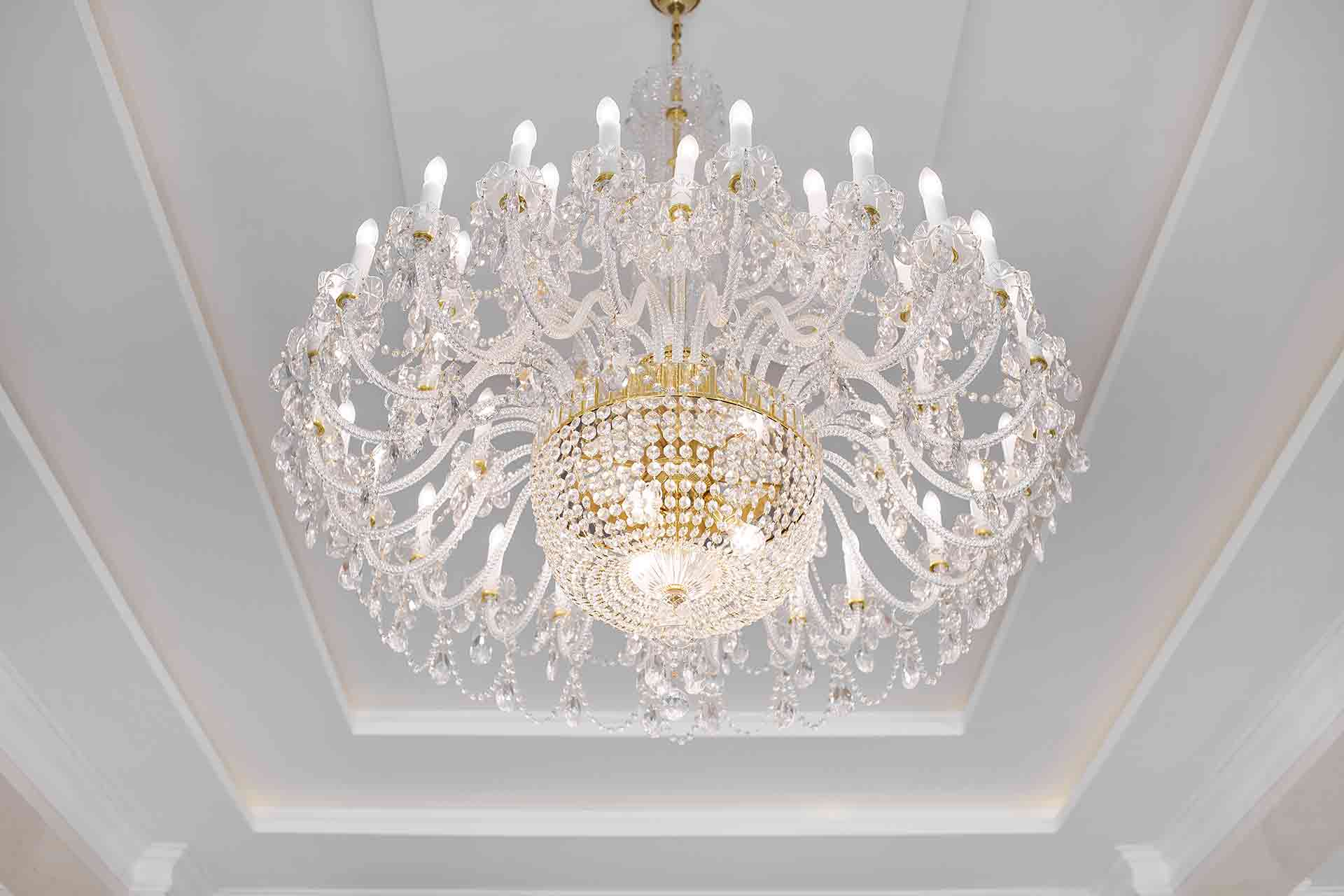
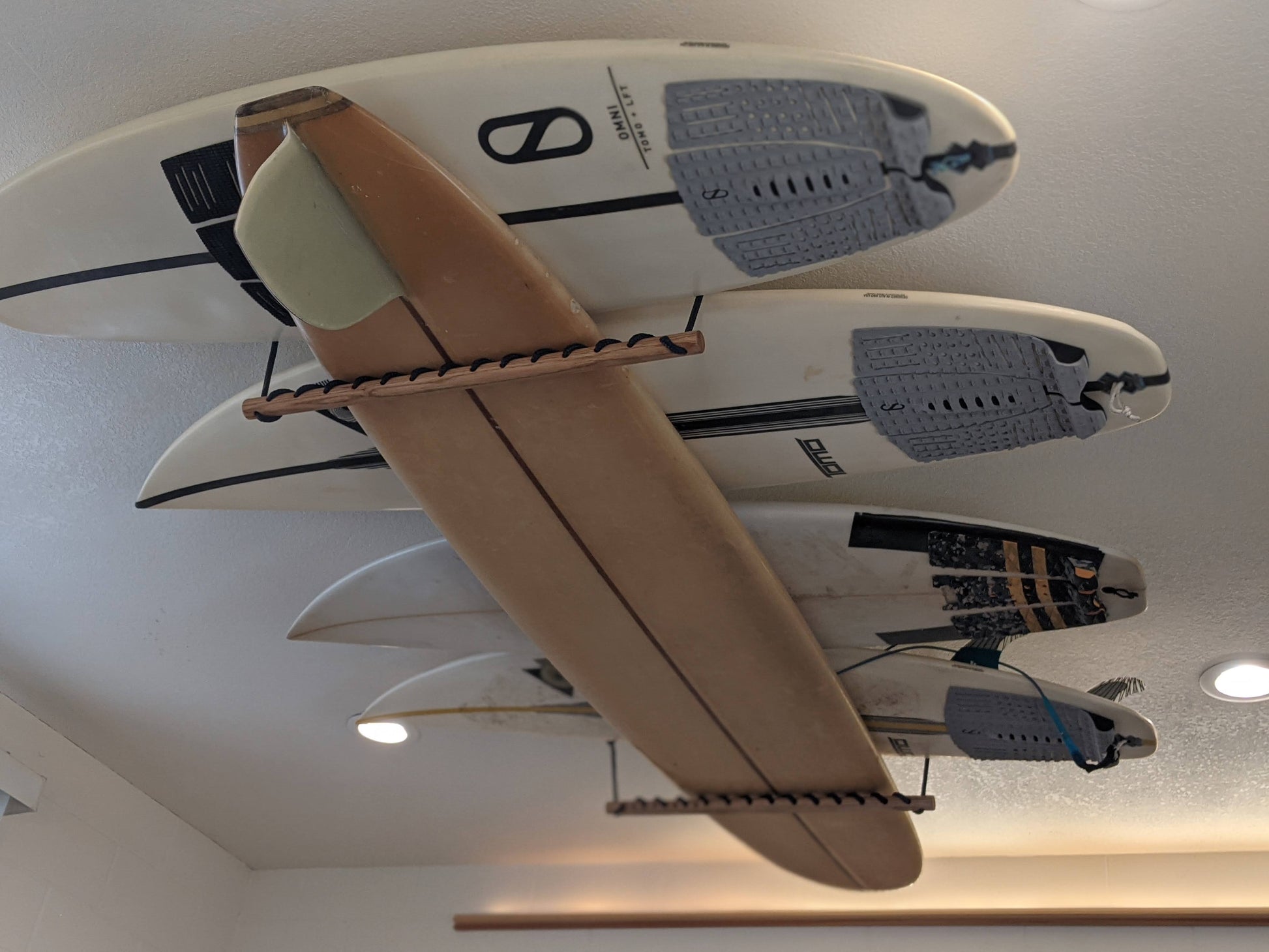
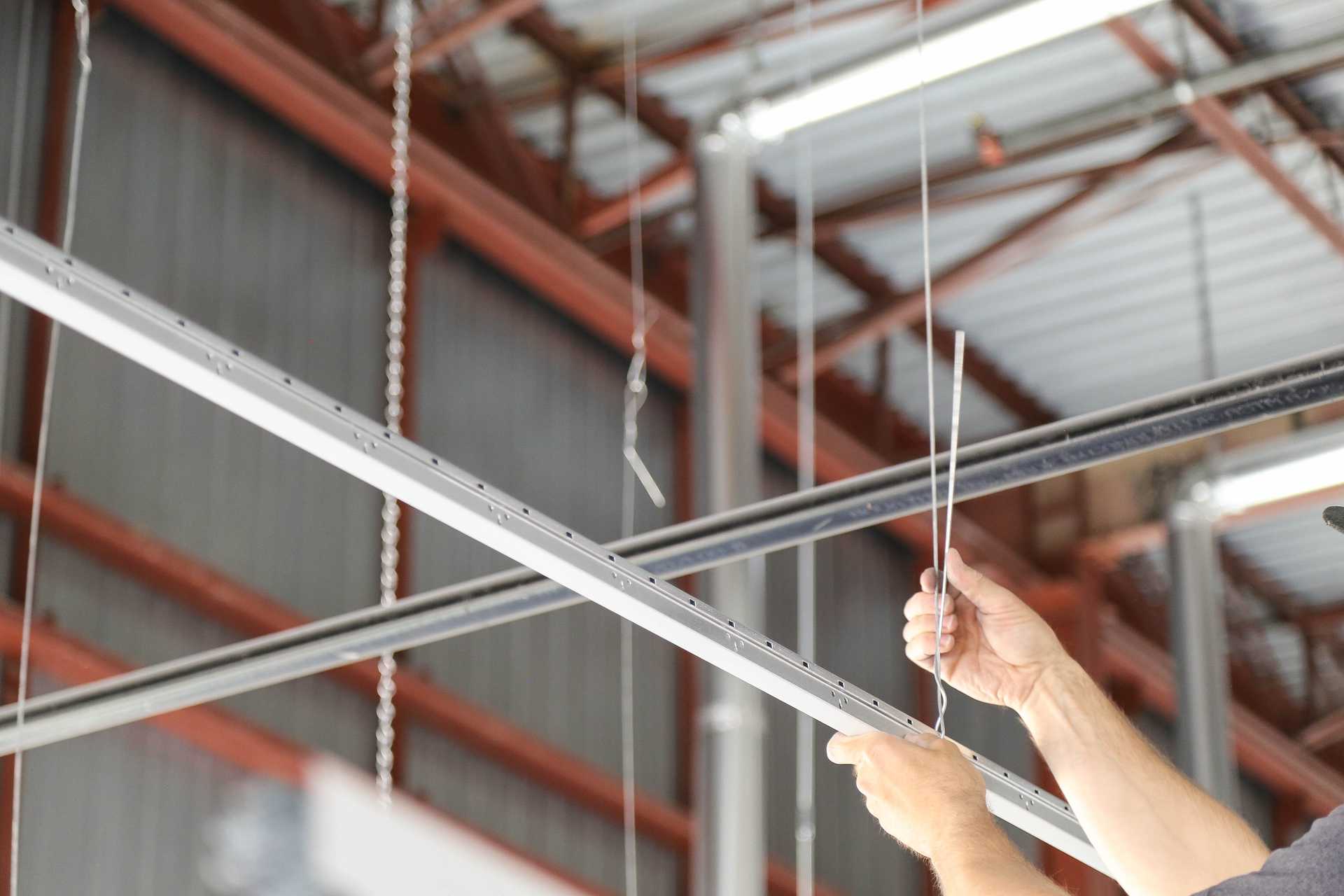
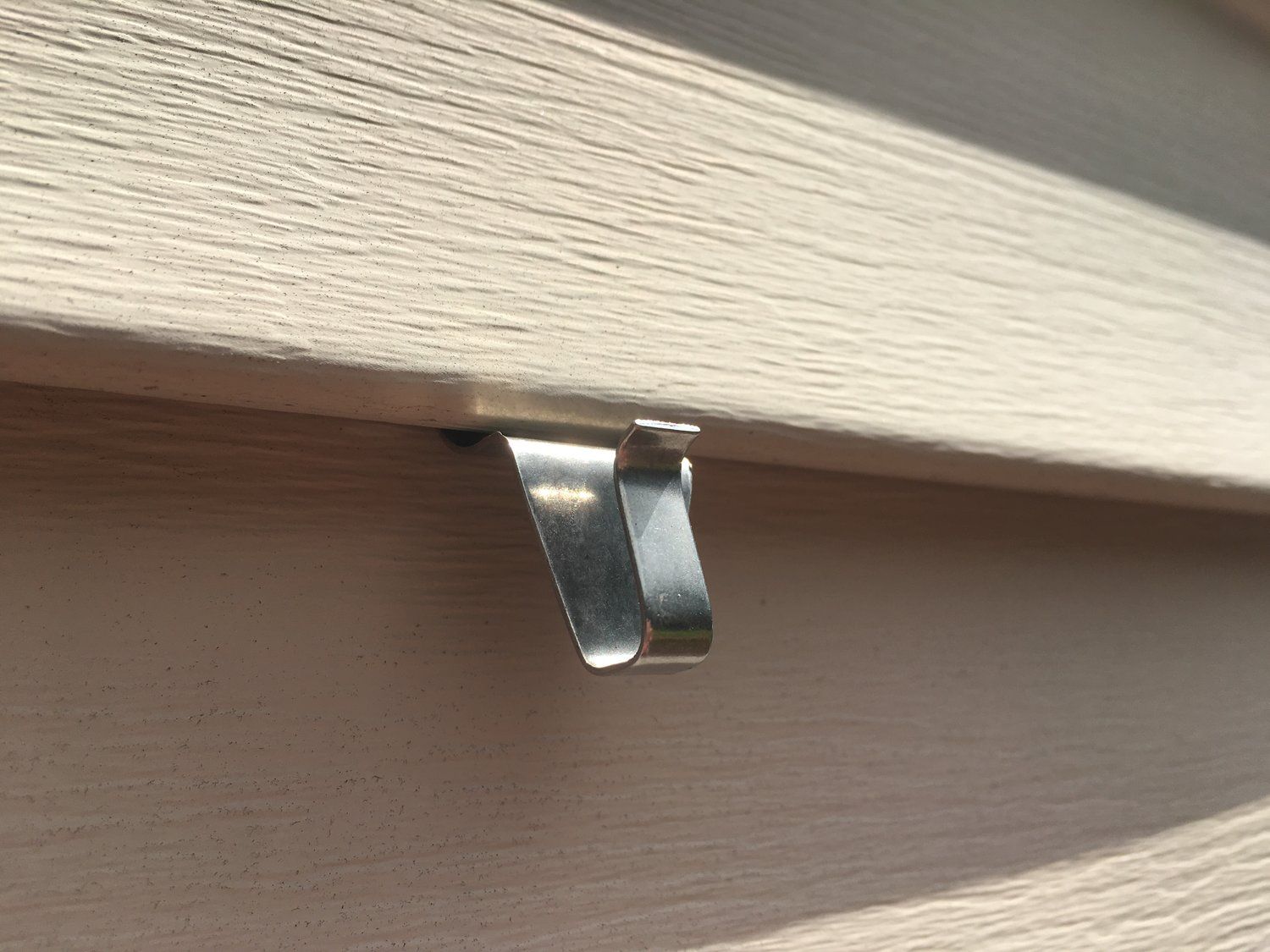


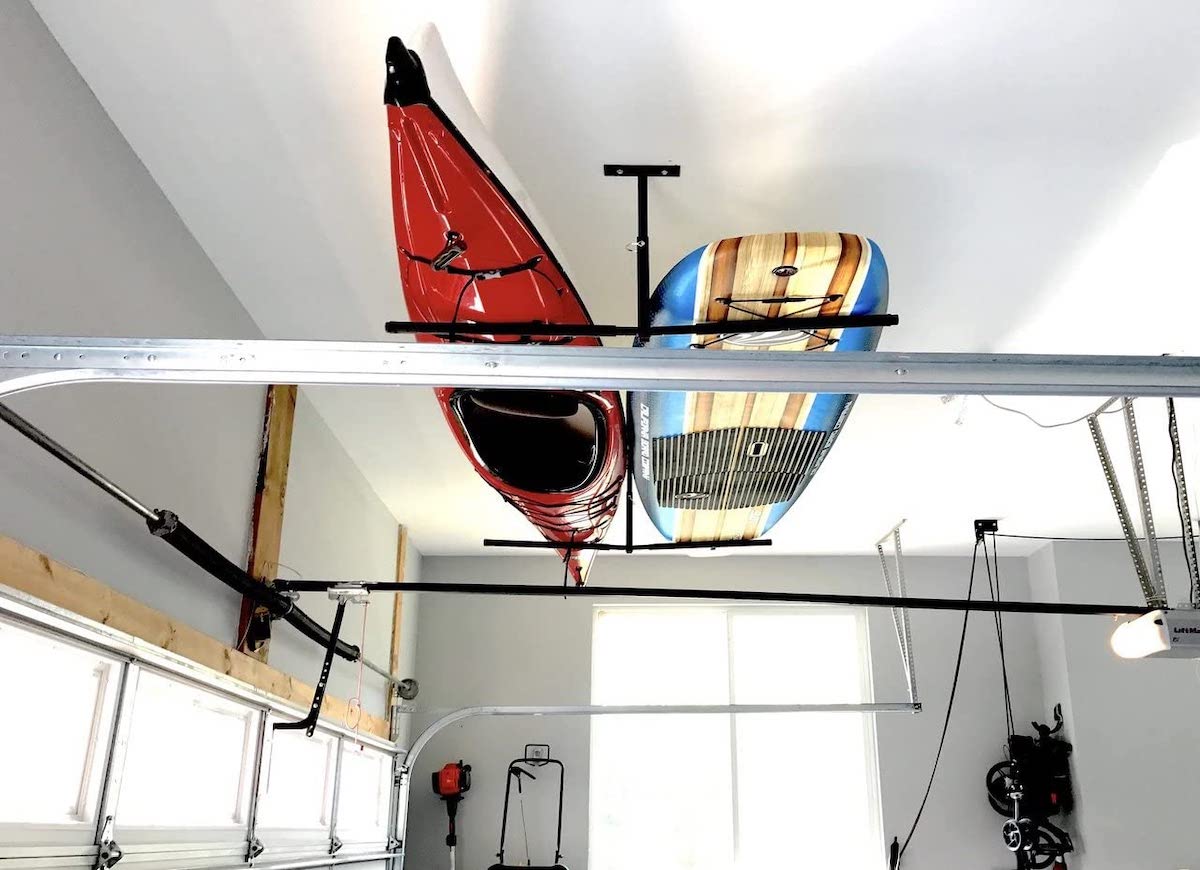
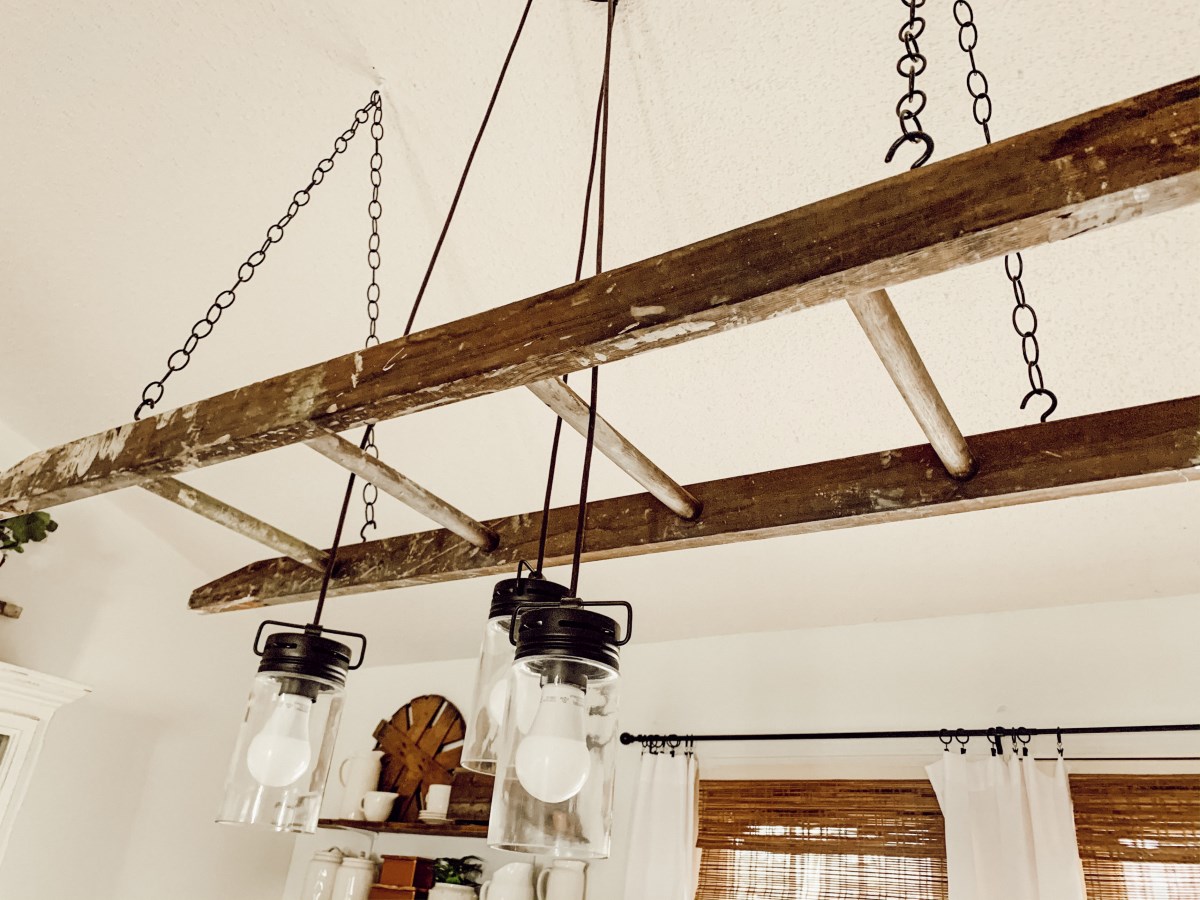

0 thoughts on “How To Hang Something Heavy From The Ceiling”